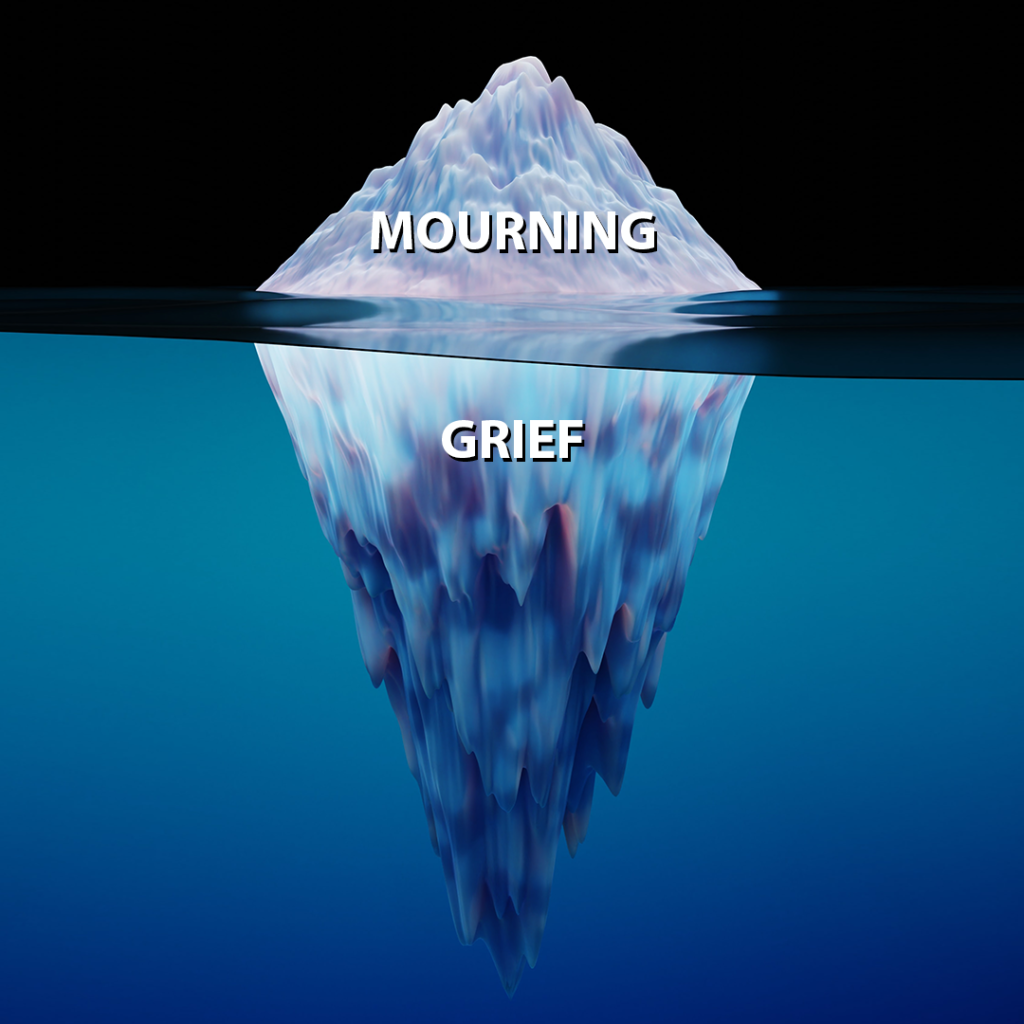Grief Gone Public

You make eye contact with your friend, whose partner recently died, across a crowded parking lot. It’s been several weeks and the last time you saw her was at the memorial service. You walk over and let her know that you’ve been thinking of her as you share a tearful hug. You notice the bags under her eyes; she looks exhausted, but you find comfort in seeing her out and about, returning to some sense of “normalcy.” The tears, the fatigue, the memorial service, the mourning. This is grief gone public. If you imagine an iceberg, mourning is the 10% above the water that we can see when we encounter a griever. Grief is the 90% below the water, all which we cannot see – because we aren’t that person. The forgetfulness, the fear, the ache, the irritability…The myriad of emotions that are wide-ranging and wildly ranging, shifting inside of us. Grief changes us, and grief itself changes.
National Grief Awareness Day
National Grief Awareness Day (observed yearly on August 30) is dedicated to raising awareness of the myriad ways in which individuals cope with loss. It was founded by Angie Cartwright in 2014 with the hope of encouraging open communication on loss and bereavement and better informing the public on the facts of grief.
Free Grief Resources
Grief support for adults and children/teens (ages 5-17) is available in-person and via telehealth to those who reside in our 8-county service area. For information regarding grief support for adults, please call Transitions GriefCare at 919-719-7199. For child/teen grief support, call Transitions Kids at 919-748-0823. Click here to view our current offerings calendar.
1 Comment. Leave new
Thanks for this posting. After my husband died nine years ago, I seemed to function normally most of the day. I handled notifying everyone, filing all the important papers related to his death, making a new will. In the evenings, home alone, I kept busy — hyper busy — cleaning out the attic and everything else I had put aside to care for my husband during his blindness, broken shoulder and cancer. Then I stared at a life-sized photo of him and wailed, “I want you back.” Over and over. Thanks for helping people understand that grieving is a long, slow process. Thanks for helping us all to be more understanding of the situations and perspectives of others.